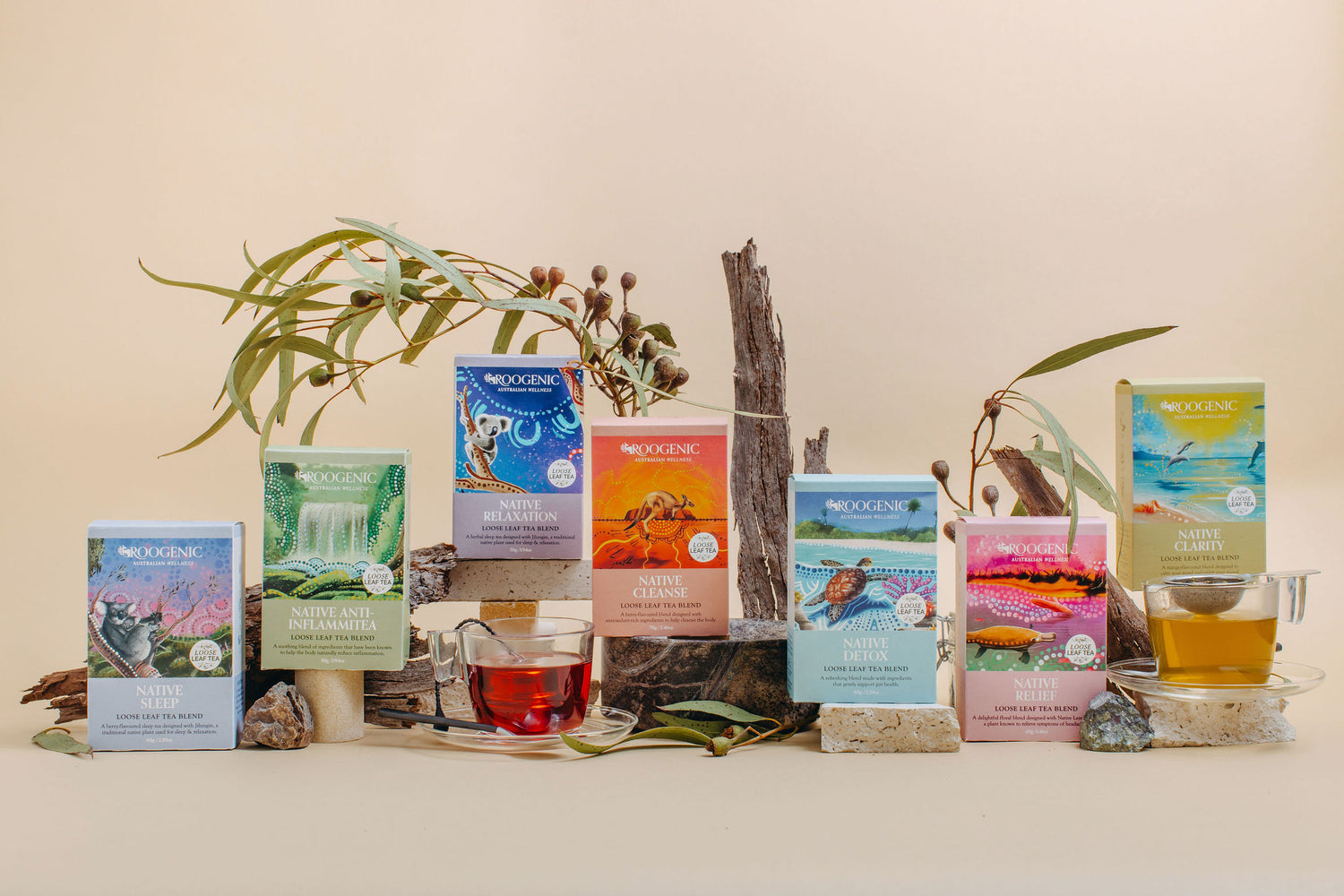Gut Restore is a synergistic, multi-action blend containing antioxidant rich native bush foods lemon myrtle, Kakadu plum and finger lime plus probiotics to support gut health.
Science Meets Nature: The Ingredients Behind Gut Restore
Kakadu plum (Gubinge)
Kakadu plum (Gubinge) is nutrient and antioxidant rich. It contains vitamin E, gallic acid, ellagic acid and bioflavonoids such as quercetin, hesperetin, kaempferol, luteolin and anthocyanins. Additionally, Kakadu plum contains the highest levels of vitamin C derived from plants. Vitamin C is a powerful antioxidant nutrient and a cofactor in enzyme reactions like collagen synthesis. It can protect the cells from free radical damage, regenerates vitamin E, and enhances iron absorption. Gallic acid (GA) has antioxidant, anti-inflammatory, and antimicrobial properties. Research suggests that GA has the potential to influence immune responses and enhances natural defenses against harmful microbes.
References: (118, 119, 127, 128, 129, 130, 131, 132, 133, 134, 135, 136, 137, 138)
Lemon Myrtle
Lemon myrtle contains the highest recorded level of citral than any other plant. Vitamin E, calcium, zinc, magnesium, and plant-nutrients like hesperidin, gallic acid, ellagic acid, quercetin, and myricetin can also be found in Lemon Myrtle. Citral has antimicrobial, antifungal, antioxidant, and anti-inflammatory properties. Gallic acid (GA) has antioxidant, anti-inflammatory, and antimicrobial properties. Research suggests that GA has the potential to influence immune responses and enhances natural defenses against harmful microbes.
References: (117, 118, 119, 120, 121, 122, 123, 124, 125, 126)
Finger Lime
Finger lime contains vitamins, minerals, amino acids and terpenes such as limonene. Limonene has been reported to have anti-stress, neuroprotective, anti-inflammatory and antioxidant properties.
References: (113, 114, 115, 116)
Zinc-carnosine
Zinc-carnosine is a compound that contains both zinc and carnosine. A number of studies have demonstrated that it has gut healing potential by supporting the repair and maintenance of gut mucosal lining.
Saccharomyces boulardii
The probiotic Saccharomyces boulardii (SB) is used for gastrointestinal imbalances such as intestinal inflammatory conditions and has a number of actions including,
- Anti-inflammatory
- Immune regulation
- Suppressing the growth of harmful bacteria and parasites
- Increasing the stability of the intestinal barrier
Prebiotics
The composition and activity of the gut microbiota can be influenced by dietary prebiotics. Prebiotics including inulin and green banana resistant starch provide a food source for gut flora and increase the production of short chain fatty acids (SCFA) which can improve intestinal barrier environment. Green banana resistant starch was found to significantly increase SCFA production and increased the diversity of gut flora, in animal models.
References: (48, 56, 57, 58, 59, 60, 61, 62)
L-Glutamine
Research shows that glutamine supports gut microbiome, mucosal wall integrity, and modulates inflammation to improve gut health.
Slippery elm, aloe vera and marshmallow
Slippery elm, aloe vera and marshmallow contain mucilage. This substance forms a gel-like consistency when it absorbs water, providing a protective coat to soothe, protect and encourage healing of the gut lining. Aloe vera has anti-inflammatory, antimicrobial, antioxidant, analgesic and wound healing properties. It's been shown that aloe vera can reduce inflammation, ulcers, and tissue damage associated with the inflammatory bowel conditions ulcerative colitis, in animal models.

